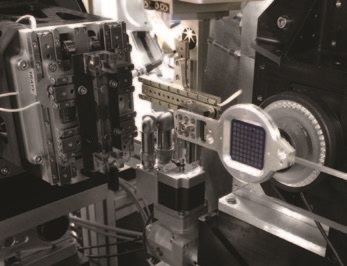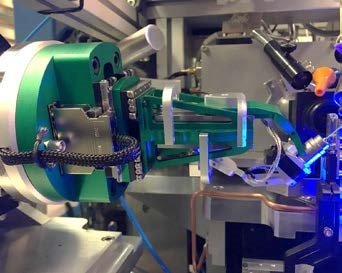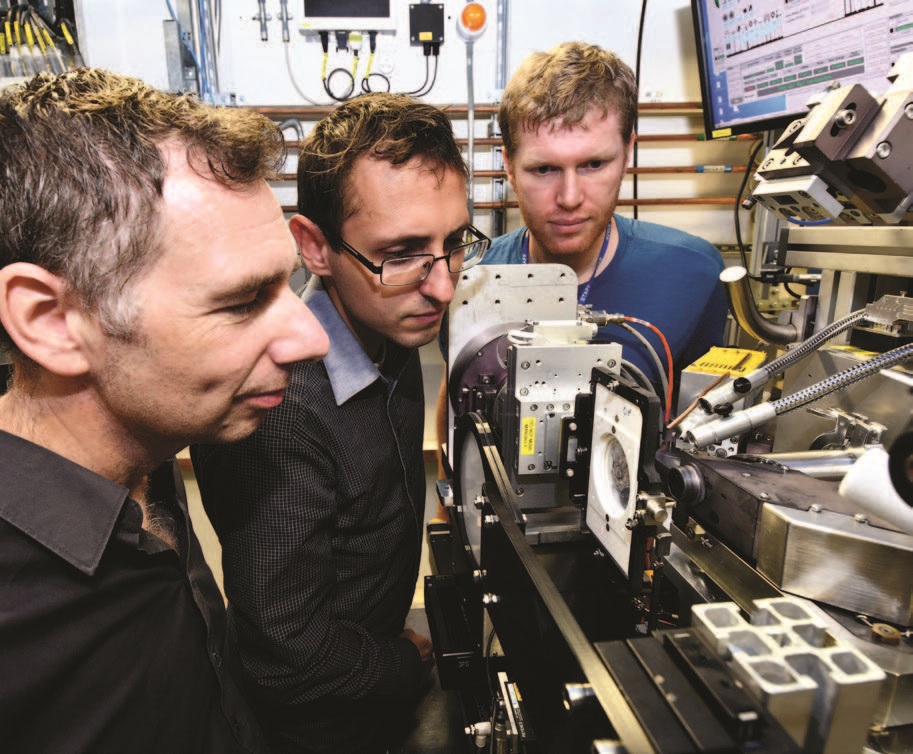Keep up to date with the latest research and developments from Diamond. Sign up for news on our scientific output, facility updates and plans for the future.


Our fixed target approach makes use of silicon nitride ‘chips’ with the current generation of chip capable of holding more than 25,000 crystals. Chips are mounted on a high-speed, high-precision xyz stage mounted at the sample position (Fig. 1). This setup allows data collection from all 25,600 positions on a chip in less than 10 minutes.
2017 has seen the final touches to the capabilities of the dedicated in situ VMXi beamline being commissioned and new workflows developed. The beamline is now at a state where regular user operation and further hardware/ software refinement is continuing in parallel. Input from initial users has been invaluable in progressing the beamline development, and indeed the demand for acting as beta testers from users has illustrated the keen interest amongst the MX community for the new capabilities that the beamline now provides. Alongside the beamline development, the VMXi team has also brought facilities together in a new central crystallisation laboratory located at the Research Complex (RCaH) next to Diamond. This facility is now open to users and can be used to prepare crystallisation experiments for the VMXi beamline – as well as for the Membrane Protein Laboratory and the XChem facility. Furthermore, the beamline team is working with the Diamond-based XFEL Hub to develop serial crystallography functionality which will also become part of the beamlines future offering to the MX community.

Diamond Light Source is the UK's national synchrotron science facility, located at the Harwell Science and Innovation Campus in Oxfordshire.
Copyright © 2022 Diamond Light Source
Diamond Light Source Ltd
Diamond House
Harwell Science & Innovation Campus
Didcot
Oxfordshire
OX11 0DE
Diamond Light Source® and the Diamond logo are registered trademarks of Diamond Light Source Ltd
Registered in England and Wales at Diamond House, Harwell Science and Innovation Campus, Didcot, Oxfordshire, OX11 0DE, United Kingdom. Company number: 4375679. VAT number: 287 461 957. Economic Operators Registration and Identification (EORI) number: GB287461957003.